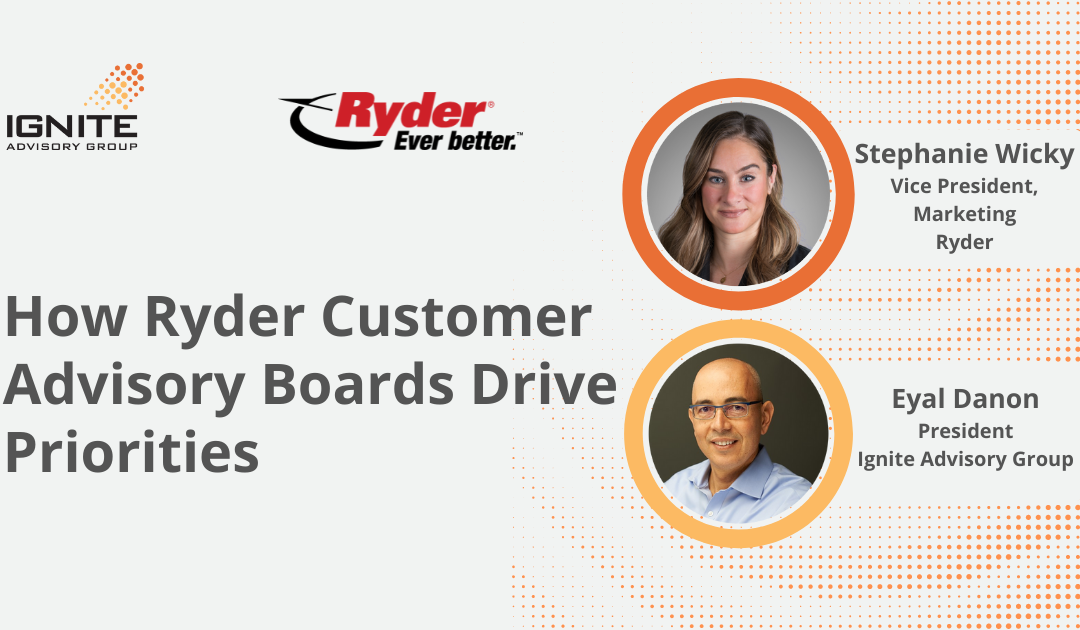Ignite’s founder Eyal Danon had the pleasure of interviewing Stephanie Wicky, Ryder’s Vice President of Marketing and CAB program overseer, about her overall initiative, accomplishments and guidance to those who would like to duplicate her various successes. Here are five keys to Ryder’s CAB program success that Stephanie highlighted:
1) High level of executive support
Stephanie conveyed the importance of her executive management’s support and participation in her CAB program – her CEO and company Chairman, Robert Sanchez, personally attends and actively participates in Ryder’s CAB meetings. As Ryder is focused on growth through innovation and offering new solutions, the leadership team regularly comments about how the CAB has helped provide valuable insights towards such initiatives. As such, the leadership team acts as a strong champion of the CAB programs.
2) Customer advisory board members as strategic consultants
As CAB members can sometimes focus on their own firms’ interests, Ryder’s CABs reinforce the idea that members also wear their “business advisor hats” during meetings and provide strategic guidance to Ryder’s leadership team. Such high levels of strategic engagement require a culture of transparency and trust to enable such discussions.
3) Pick the right advisory board member participants
Selecting CAB members who are of similar levels, and eager to collaborate and contribute has been another CAB success factor. On the host company side, not inviting individual account reps and the “sales vibe” they bring is also a must. After all, CABs are not sales events and the attending leadership can help with any account follow-ups afterward if necessary.
4) Keep advisory board meetings engaging
While CAB meetings moved online, members were eager to learn about the supply chain challenges shared by their colleagues, and what Ryder was doing to help mitigate them. Keys to successful virtual meetings included keeping the meetings short, prioritizing on one or two key topics, having Ignite Advisory Group facilitate the meeting, and focusing on the immediate challenges at hand (as opposed to too much long-term planning). Finally, keeping meetings fun also helped with engagement – they had a whisky distillery owner attend one of the meeting’s virtual social events, which went over well with CAB members who missed in-person networking.
5) Have a robust post-meeting plan and process
Stephanie pointed to what happens after the meeting that is key to her strong program. She says they have a robust action tracker process, in which key stakeholders participate and commit to action items and timelines – and are comfortable communicating the status of these to CAB members on an ongoing basis.
Stephanie looks forward to going back to in-person CAB meetings in 2022, as most members are not only vaccinated but looking forward to engaging with their colleagues face-to-face again.
Conclusion
Ryder’s CAB program is quite impressive. If you get a chance, check out her interview full of customer advisory board best practices for more detailed insights and tips for optimal success.

